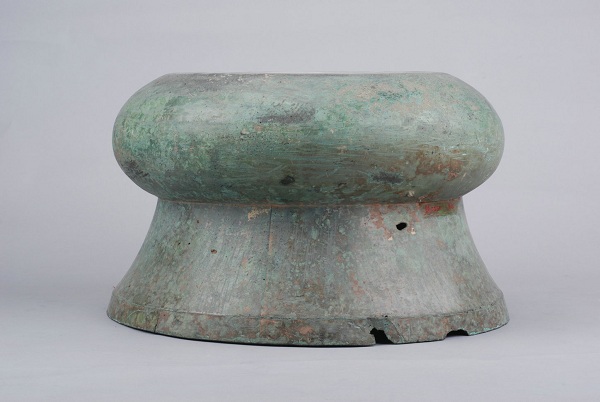Bronze Drum

A bronze drum possessed by the Anthropology Museum of Guangxi dates back to the Spring and Autumn Period (770-476 BC). [Photo/amgx.org]
The bronze drum is a percussion instrument created by people in the Yue Kingdom (2032BC-222 BC). It is an important tool for transmitting information, issuing orders, and offering sacrifices. It also possesses important historical and cultural values.
China is the country with the largest number of ancient bronze drums unearthed and collected in the world, and Guangxi is the region that has the most ancient bronze drums, as well as the most complete categories in China. Bronze drums of various historical periods from the Spring and Autumn Period (770-476 BC) to the end of the Qing Dynasty (1616-1911) have been discovered in Guangxi, with a number totaling more than 2,000. It is also one of the regions with a long history of casting and using bronze drums.
With the development of society, the bronze drum is also known as a common instrument used for entertainment. At present, the Zhuang, Buyi, Dai, Dong, Shui, Yao, Yi, and Miao ethnic groups in Guangxi still play bronze drums in festivals accompanied by singing and dancing, as well as in ceremonies worshipping ancestors to pray for the blessings of good weather and a peaceful life.
The bronze drum dance, a unique custom of the Zhuang ethic group, began with the worship of nature and ancestors. It is an important cultural heritage in ancient China. After the founding of the People's Republic of China, the bronze drum dance has been used for annual festival celebrations, becoming an entertaining dance for the public. On May 20, 2006, it was approved by the State Council to be included in the first batch of national intangible cultural heritages.














